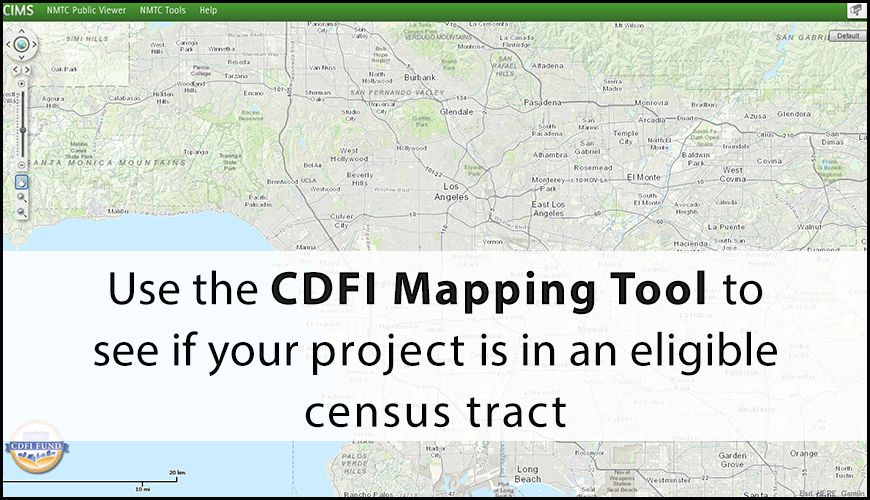Step 1 - Basic Eligibility Based on CDFI Fund Criteria
This section outlines the basic eligibility requirements for projects financed by the LADF, pursuant to its New Markets Tax Credit (NMTC) allocation agreement with the Community Development Financial Institution (CDFI) Fund. 100% of LADF’s NMTC allocation must be invested in projects located within the limits of the City of Los Angeles AND in an eligible census tract.
To determine if your project meets these initial requirements, check that the project zip code is within the City of Los Angeles using geohub.lacity.org, and use the CDFI Mapping Tool to see if your project is in an eligible census tract. Eligible census tracts may also be found using the New Markets Tax Credit Eligibility Status Policy Map.
At the Governing Board’s discretion, LADF can finance other types of projects eligible under the NMTC program such as community facilities, charter schools and for-sale housing.
To determine if your project meets these initial requirements, check that the project zip code is within the City of Los Angeles using geohub.lacity.org, and use the CDFI Mapping Tool to see if your project is in an eligible census tract. Eligible census tracts may also be found using the New Markets Tax Credit Eligibility Status Policy Map.
Census Tract Eligibility
LADF’s NMTC allocation must be invested in projects within the City of Los Angeles and in census tracts meeting the CDFI Fund’s criteria of “Areas of Greater Economic Distress”, defined with the following criteria:
1. A Census tract that meets at least one of the following characteristics:
2. A Census tract that meets at least two of the following:
- Poverty rate greater than 30%
- Median family income that does not exceed 60% of the statewide OR metropolitan area median family income, whichever is greater
- Unemployment rate at least 1.5 times the national average
- As permitted by IRS and related CDFI Fund guidance materials, projects serving Targeted Populations to the extent that:
(i) such projects are 60% owned by low-income persons (LIPs); or
(ii) at least 60% of employees are LIPs; or
(iii) at least 60% of customers are LIPs
- Census tracts with one of the following:
(i) poverty rates greater than 25%
(ii) median family income does not exceed 70% of the statewide OR metropolitan area median family income, or
(iii) unemployment rates at least 1.25 times the national average - Los Angeles Federal Empowerment Zone, Federal Enterprise Community, or Los Angeles Renewal Community
- U.S. Small Business Administration (SBA) designated HUB Zones
- Federal Brownfields Redevelopment Area
- HOPE VI Redevelopment Area
- Federally designated medically underserved areas
- State Enterprise Zone
- Counties for which the Federal Emergency Management Agency (FEMA) has both issued a "major disaster declaration" and made a determination that such County is eligible for both "individual and public assistance"
- Food Desert, defined as either:
a census tract determined to be a Food Desert by the U.S. Department of Agriculture (USDA), as identified in USDA's Food Desert Locator Tool; or
a census tract that qualifies as a Low-Income Community and has been identified as having low access to a supermarket or grocery store through a methodology that has been adopted for use by another governmental or philanthropic healthy food initiative
Proposed Activity Eligibility
- Expansion of an existing facility
- New construction
- Rehabilitation of real estate
Project Type Eligibility
The LADF is committed to financing non-residential projects, with a particular focus on projects that create maximum community and economic benefits (i.e. jobs, sales taxes, business license taxes, property tax increment). The LADF indicated that it would target its allocation to the following project types:- Industrial rehabilitation or expansion projects
- Retail projects in underserved neighborhoods
- Mixed-use projects



